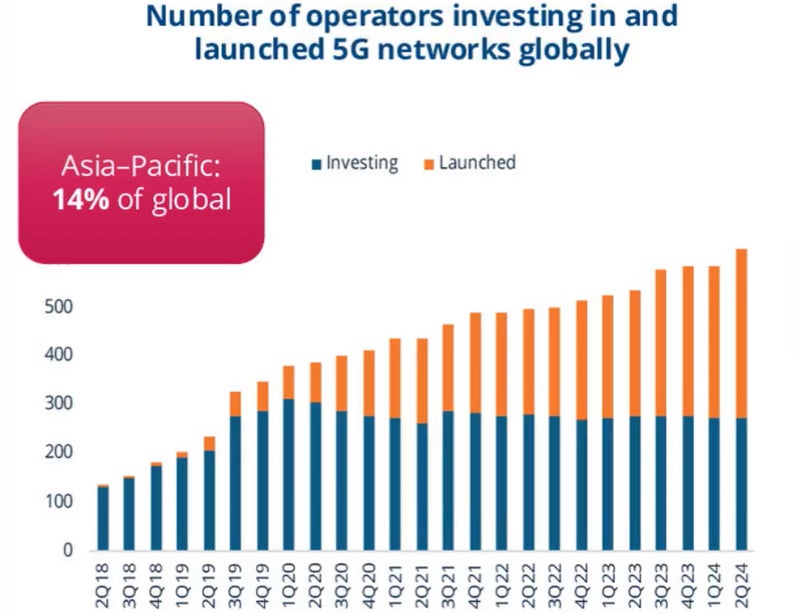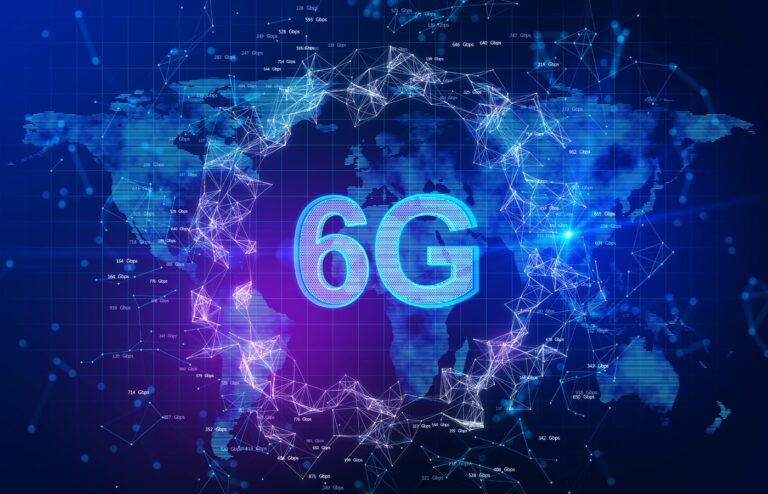New research finds that the APAC region is poised to lead the next wave of mobile technology.
The Global Mobile Suppliers Association predicts that Asia Pacific will lead the rollout of global 6G mobile networks over the next decade, as operators in the region innovate to outperform more conservative peers in other parts of the world.
But 5G remains popular: The GSA, which tracks more than 2,500 carriers around the world, suggested in a recent webinar that it expects a number of 5G launches in the short to medium term, with even more companies in the Asia-Pacific region planning commercial 5G deployments in the long term.
‘Innovative and proactive’ Asia Pacific operators emerge as global 6G leaders
According to the GSA study, the global rollout of 6G will begin in 2030, and could even be as early as 2029. Ian Fogg, technology industry analyst at CCS Insight, said in the webinar that operators in the Asia-Pacific region are expected to lead the world in deploying 6G networks.
“One interesting trend is that European operators are becoming very cautious about investing in new technologies and financial returns,” he said. “In Asia Pacific, we are seeing operators that are much more innovative and proactive. So we may see some early deployments of 6G in Asia Pacific.”
See also: Potential use cases for 6G
While Fogg said the technology is still several years away from being rolled out, discussions around 6G spectrum are currently focused on the 7GHz to 15GHz range around the world.
He believes that “7GHz or so is expected to be a key focus in the 6G era.”
5G technology adoption accelerates in Asia Pacific
According to GSA data, the number of 5G networks in Asia Pacific is expected to continue to grow over the next few years. The trend reflects accelerating 5G adoption and investment by mobile network operators globally, with the GSA noting a significant increase in launches since the end of 2020.

GSA’s APAC 5G data also shows:
- 92 operators across 27 countries, representing most nations and regions in Asia Pacific, are investing in 5G mobile or fixed wireless access networks.
- To date, 47 operators in 17 countries have deployed the technology.
- Currently, seven operators in seven countries are deploying 5G technology, with adoption expected to increase in the short to medium term.
- Thirteen operators in eight countries are in the planning stages of 5G deployment.
- APAC accounts for 14% of operators investing in and deploying 5G networks worldwide.
See also: What is the difference between 5G and 6G?
With carriers now deploying 5G or planning to do so, “it is likely that 5G networks will be commercially available across much of the Asia-Pacific region in the long term,” Jordan Cox, a GSA research scientist, said during a GSA webinar.
Asia-Pacific region declared independent 5G “hotspot”
The Asia-Pacific region accounts for a “particularly strong” 27% of global investment in 5G standalone networks.
5G Standalone is considered the “next step” for 5G technology because it is not dependent on a core network and offers potential benefits such as improved reliability, reduced latency, extended coverage, stronger indoor signals, and advanced security software.
But its adoption has been slow, and the GSA suggests this may be due to relatively slow upload and download speeds compared to non-standalone 5G.
According to GSA data, in APAC:
- Forty operators in 14 countries are investing in 5G standalone, and 22 operators in nine countries have deployed the technology, including China’s three largest operators — China Mobile, China Telecom and China Unicom — as well as Globe Telecom in the Philippines and Telstra in Australia.
- Ten operators in eight countries are currently testing the technology, including Cellcard in Cambodia and Spark in New Zealand.
Asia Pacific operators talk about 5G advanced networks
Some operators in the region, particularly in China, are already discussing the rollout of 5G-Advanced or 5.5G, including timing and delivery packages. Operators with 5G standalone networks are expected to quickly deploy 5G-Advanced services.
“Currently, flagship smartphones on the market are equipped with Snapdragon 8 Gen 3. [Mobile Platform]”Qualcomm chipsets that shipped in smartphones late last year have 5G-Advanced-capable hardware,” Fogg noted, “so we should see fairly rapid adoption in recent flagship smartphone purchases as carriers begin to roll out 5G-Advanced.”
Other Trends in Asia Pacific Telecommunications Networks
The APAC telecom market is seeing a gradual decline in LTE adoption due to the growth of 5G, expansion of private networks, and weak 5G RedCap and mmWave activity.
LTE declines, 5G surges
According to GSA data, only six APAC-based operators have deployed LTE networks, the network most often associated with 4G, with 12 more planning to do so. A total of 116 operators across APAC have already deployed LTE technology, making 2015 the peak year for LTE globally.
“This indicates that the LTE market has peaked in Asia Pacific, as have other regions such as North America, Western Europe and even Latin America, and the transition to 5G is now underway,” Cox said.
GSA said several market drivers are driving this trend, including an increase in 5G devices and subscribers for consumers, and lower operating costs and increased efficiencies of 5G networks for carriers.
Manufacturing-led private network adoption
The Asia Pacific region accounts for 22% of the world’s enterprise private networks. GSA’s database contains 314 unique customer references from the region, primarily in Australia, China, and Japan. Smaller numbers of private networks are located in South Korea, India, and Thailand.
The main sectors of the private network are:
- Manufacturing, due to the large manufacturing sectors of China, Japan and India.
- Mining. Australia has a large mining sector.
- Device testing and lab services.
Asia Pacific region sees low levels of 5G RedCap activity
Only five APAC operators have invested in 5G RedCap, the latest addition to the 5G standard. These include:
- Two launches in China.
- There are currently two RedCap networks in the testing phase in Thailand and Singapore.
- Telkomsel plans to launch RedCap in Indonesia.
Initial use cases include the use of RedCap’s consumer premises equipment, which will allow carriers to access 5G spectrum at more cost-effective prices as they transition from LTE networks. GSA expects other capabilities of 5G RedCap will also be available as 5G-Advanced is rolled out.
Network outages expected to increase as 5G rolls out
The GSA concluded that “significant progress” is being made toward phasing out older 2G and 3G networks and transitioning to newer, more efficient LTE and 5G networks. As of July 2024, 24 carriers in 14 countries in the Asia-Pacific region have completed their network switchover, including 2degrees in New Zealand and KDDI in Japan.
“We expect to see increased switch-off activity in Asia Pacific over the next two to five years as more consumers move away from older devices and operators continue to upgrade their networks,” Cox said.


